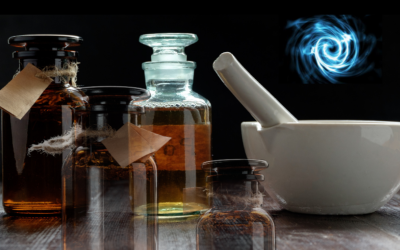Like most other Americans, I was stunned by the news of the massacre of twenty young children and their teachers in Connecticut. Later that day I drove to town, and by the time I was heading back home night had fallen. Here and there along my route different colored Christmas bulbs still glowed around the perimeters of windows and doors and spiraled around front lawn ornamental trees, yet they seemed to have lost their meaning. The motionless evergreens limned by the gray-black Pacific Northwest night sky, seemed to have withdrawn inward in dismay. The night darkness was denser than usual, bringing to mind an old Hank Williams lyric:
“The moon just went behind a cloud
To hide its face and cry.”
I began thinking about something that many others have thought before: Who suffered the worse fate, the children or the parents who had instantly been launched into a sea of perpetual despair?
Certainly, those children lost their precious mortal spark, physical connection to loved ones, aspirations and yet-to-unfold potential, and that is inestimably tragic. However, given their unencumbered innocence, I am comforted by the certainty that they are already in a far brighter place and have been gathered in by relatives who preceded them in death, and who also dearly love them.
On the other hand, the parents have effectively been sentenced to life without parole from heart-stabbing pain and a haunting vacancy that can never be filled. A parent who has suffered the loss of a young child, especially in such a brutal way, who lives to advanced old age, will still well with tears when, sitting inside with the curtains billowing gently on a sunny summer day, the sound of children’s laughter floats into the room upon the breeze. This is the type of wound that surgeons fear; an indolent one that scabs over but never fully heals, intermittently reopening and bleeding freely.
So with this understanding in mind, I am providing the details for the preparation of an essential oil that can be used to help those wounded by the loss of a child. This blend is designed to penetrate beyond the emotions to the soul. Of course, it is important in the short term to employ various therapeutic measures to assuage the raw grief and anger that exacerbates suffering, but this type of wound rends the fabric of the emotions and penetrates to the innermost core of being.
If of you actually know any of the relatives of those Connecticut children or friends of those families, consider preparing this blend for those people who are open to it. However, the blend has much wider application than that, because so many across this country have taken this murder of children very personally. They mourn for those youngsters as if they were theirs and gaze upon their own offspring, thinking “there but for the grace of God go I.” Thus, this blend is relevant at this moment in time for millions of people, perhaps including you.
Of course, every hour of each day people around the world suffer the no less heart-wrenching loss of a child by illness or accident. If you know any such individuals, this blend may prove of good service to them during the long night of the soul that invariably accompanies that loss.
I have named this blend Loss and Remembrance. Follow the instructions closely; blend with spiritual intent and undistracted focus. Engage with the soul-nature of the oils for they are indeed ensouled. If the oils can feel what is in your soul, they will understand the nature of the service you ask of them. If you have any questions, feel free to e-mail me.
Loss And Remembrance Blend
Rabbi Mendel of Rymanov (1745–1815), a noted Hasidic master, once noted that during the time it took him to recite one of the central prayers in the Jewish liturgy, all the people who had ever asked him to pray to God on their behalf would pass through his mind. Someone asked him how that was possible. Rabbi Mendel replied:“The need of every single one of those people leaves a trace within my heart. In the hour of prayer I open my heart and say: ‘Lord of the world, read what is written here!'”
Instructions:
1) Review the keynotes I have provided for each oil to help you connect with their inner soul natures.
2) Note the number of drops I have suggested for each oil in the blend. You can multiply this number by any factor you like to produce a larger volume of blend. The drop counts provided here will yield a batch of approximately 2.5 ml.
I suggest you start with a small experimental batch before going on to a larger one. The drop counts I am providing are only estimates, as you will all be blending with different samples of sage oil, neroli oil, etc. Scent quality and intensity will vary from one sample of an oil to another according to where it was grown, the growing conditions, and the quality of the oil. Therefore, if I am suggesting 4 drops of sage oil, for you, 3 or 5 drops may be better options. You will need to determine this via your senses and your capacities for feeling and spiritual connection to the soul of the oil.
The only oil for which you should not go beyond the suggested drop count provided is galbanum oil. This oil has a very strong scent-intensity and even one drop too many can ruin a blend.
3) After preparing a small batch of the blend, let it rest in a quiet place (on wood or glass away from noise and electronic equipment) for a day or two. Then, sample it and see if you are happy with it. If not, then you have the option of creating a second layer in the blend consisting of more of certain oils and perhaps omitting others. Second, third, fourth layers, etc. do not need to contain all the oils in the formula. I often formulate blends consisting of 25 or more oils, and sometimes a layer will consist of only one of these. After building a layer, always let the blend rest at least 24 hours before adding another one.
The layering of blends is one of the central features of Spiritual PhytoEssencing blending, and it is an art that I will discuss in detail in a future issue of this journal.
4) In Spiritual PhytoEssencing, we do not shake blends to mix the oils. Rather, we hold the bottle vertically and swirl it around so as not to disturb the horizontal integrity of various layers of the blend. The mixing of oils in a blend is another art that I will discuss in detail in a future issue.
5) Use the completed blend in a quiet environment yourself and share with others you know who appreciate essential oils, and closely observe your experience and that of others with it. This way you will have a greater understanding of how to use the blend.
Loss And Remembrance Formula
Add the oils in the order they are listed:
1) Sage (Salvia officinalis) 4 drops
Keynotes: In England, it was once a custom to strew sage over graves, perhaps to help mitigate grief. The genus Salvia is related to the word salvation, and so, this custom may have to do with a different type of survival struggle that takes place after death. An old alternative appellation for Salvia officinalis is Salvia salvatrix, meaning “Sage, the Savior.”
In aromatherapy, sage oil is considered to be potentially useful for the following symptoms and conditions: anxiety; emotional vulnerability; mental excitation; hyper-emotional states. In Spiritual PhytoEssencing it is also considered useful for: acute conditions arising from shock great agitation; anxious restlessness; tearfulness; fear of death; anxious dreams with much talking and moving while sleeping.
2) Neroli (Citrus aurantium var. amara) 5 drops
Keynotes: In Europe, orange flowers (from which neroli is distilled) have traditionally served as a symbol of innocence and purity. In aromatherapy, neroli is said to be of potential benefit for the following symptoms: highly emotional states; acute or chronic anxiety; restlessness; agitation; overactive Sympathetic Nervous System; (i.e., SNS–the “fight-or-flight” branch of the autonomic nervous system); disturbed heart shen (i.e., the Chinese concept of the heart-centered spirit); deep emotional pain; disconnection between mind and body; ungrounded; emotional intensity; anxiety before public appearances; insecurity; despair; hysteria; shock; inability to take initiative.
In Spiritual PhytoEssencing it is also considered useful for the following symptoms: internalizes grief; represses her sensitivity; ailments after grief; silent grief; anger followed by silent grief; monomania (i.e., dwells on a particular emotional issue); sentimental; hypersensitive; emotional overreactions; finds it difficult to release her emotions; averse to consolation; stormy relationships filled with recrimination; alternating moods; cries easily; hysteria; insomnia or excessive sleepiness after grief.
3) Jasmine (Jasmine grandiflorum) 5 drops
Keynotes: In India, jasmine is one of the best-loved flowers. In Rigveda, one of the earliest Vedas (ancient Hindu scriptures), jasmine is referred to as the Parama atman, meaning an embodiment of the power of God. The jasmine flower is revered for its pure white color, which symbolizes life’s fragility as well as its lush, fruity fragrance that correlates with the eternity of fruit.
Jasmine is a leading oil in aromatherapy and is thought to be potentially useful in the treatment of the following symptoms: nervousness; anxiety; fear; feelings of vulnerability; paranoia; deep emotional suffering; depression; pessimism; lack of confidence; nervous debility; apathy; indifference.
4) Pine (Pinus sylvestris) 8 drops
Keynotes: The Iroquois called the white pine, the “Tree of Great Peace.” On a psycho-spiritual level, pine oil helps: clear and reduce emotional repression, encourage forgiveness, including self-forgiveness and counteract feelings of hopelessness and guilt.
In The Twelve Healers And Other Remedies, Edward Bach, M.D. describes pine flower essence as being specific for individuals “…who blame themselves. Even when successful, they think they could have done better and are never content with their efforts or the results. They are hard working and suffer much from the faults they attach to themselves. Sometimes if there is any mistake, even when due to another, they will claim responsibility for it.”
5) Galbanum (Ferula galbaniflua) 1 drop
Keynotes: On a psycho-spiritual level, galbanum is thought to connect one with the qualities of Divine trust and innocence, to aid in the development of psychic abilities, and to improve one’s ability to communicate with those who have passed to the other side.
In Spiritual PhytoEssencing it is also considered to have an inherent dynamic plane relationship with the gemstone obsidian. In fact, in reference to psycho-spiritual healing work, galbanum oil and obsidian are highly synergistic. Exploration reveals a profound soul-level interface between the dynamic aspect of galbanum oil and obsidian in general and a variety of obsidian known as Apache Tear in particular. Apache Tear is thought to bring comfort in times of grief by encouraging the insightfulness required to achieve an understanding of the karmic and spiritual dynamics of trauma. Legend holds that a group of Apache women once shed Apache Tears after the U.S. Cavalry drove the warriors of the tribe off a cliff.
6) Hyssop (Hyssopus officinalis) 7 drops
Keynotes: The name hyssop derives from hyssopos, the Greek name for that plant, which, in turn, is a derivative of the esob (or azob), the Hebrew name meaning holy herb. In the Gospel of John, the Roman legionaries standing guard by the crucified Jesus offer him a vinegar-soaked sponge resting upon a sprig of hyssop.
In aromatherapy, hyssop oil is considered to be potentially useful for the following symptoms: nervous depression; nervous tension; anxiety; grief; pessimism; melancholy; negative thoughts; lack of mental clarity; emotional trauma;
In Spiritual PhytoEssencing it is also considered useful for: ailments from mental trauma such as grief, remorse, fright and anger; ailments due to physical or emotional shock; depression.
7) Litsea (Litsea cubeba) 4 drops
In aromatherapy, litsea oil is considered to be balancing, clearing to the mind, refreshing, uplifting and invigorating, and potentially useful for many of the above symptoms as well as: fatigue; lethargy; insomnia; anxiety and depression.
On a psycho-spiritual level, litsea, known in China as the “Oil of Tranquility” and commonly used prior to meditation, has an uplifting effect upon both mind and body, promotes calmness, emotional clarity and self-confidence. It is useful in helping an individual work through emotional conflict.
In Spiritual PhytoEssencing, litsea is associated with the theme of the village or community living and working together in harmony. Accordingly, any disturbance of individuals within the village or community affects all its members.
8) Rosemary (Rosmarinus officinalis) 8 drops
Keynotes: Rosemary’s reputation for: strengthening memory, and as a symbol of both the fertility of the afterlife and of faithfulness between lovers or friends, as well as between the living and their deceased forebears, extends back thousands of years. From a psycho-spiritual perspective, it is the interface of these two properties of memory and faithfulness that lends rosemary its very unique, widely applicable specificity.
Rosemary was placed in the tombs of the pharaohs to help the dead king recall his previous life during his sojourn in the afterworld. In Europe, rosemary incense was once burned at funerals in memory of the deceased. It was once a custom to distribute rosemary to the mourners at a funeral who would cast it upon the coffin after it had been lowered into the grave as a sign that the life of the deceased would not be forgotten.
In aromatherapy, rosemary oil is considered to be potentially useful for the treatment of the following symptoms and conditions: lethargy; depression; inhibited expression of thoughts and feelings; over-thinking; nerve weakness; exhaustion; On a psycho-spiritual level, rosemary is thought to help release negative thought patterns, and help develop sensitivity to the higher world.
9 ) Lavender (Lavandula angustifolia) 9 drops
Keynotes: In aromatherapy, lavender oil is considered to be sedative and harmonizing, and potentially useful for the treatment of the following symptoms and conditions: anger; mental exhaustion; nervousness; stress-related conditions; anxiety; apprehension; hysteria; delirium; inner conflict; inhibited self-expression; fear of change; emotions associated with moving toward death; nervous breakdown; depression; moodiness; manic-depression; shock; panic attacks; insomnia.
In Spiritual PhytoEssencing practice, lavender is included in every blend because it is the only oil that has the ability to harmonize the interaction between all the other oils in a given blend by encouraging soul-to-soul relation among them. Lavender’s capacity in this reference will be described in detail in an upcoming issue of this journal.
How To Use The Blend
Suggested Uses:
1) 3 to 5 times weekly, no more than once per day. Tap 2 drops on to inside of wrist. Rub wrists together and inhale deeply through nose from wrists 15 times. Turn head to side when exhaling. Repeat this breathing 5 minutes later (you do not need to apply new drops each time you repeat breathing).
2) 1 to 2 times weekly, no more than once per day. Mix 2 drops with 1 tsp. warm coconut oil. Massage into the following areas: solar plexus chakra and area on breastbone situated midway between the heart and throat chakras.
Notes:
1) Essential oil blends are intended for external use only. Also, keep away from eyes and from children (blends have been used with children in smaller doses, but, for safety reasons, children should not be given unsupervised access to essential oils.
2) Store all blends in a cool, dry, dark area away from metal and electronic equipment. Do not store on metal shelf. Instead, store them on a glass or wooden shelf.
In Spiritual PhytoEssencing, it is the plant soul force within the oils that is the central focus of formulation and blending. This plant soul force is sensitive to electromagnetic fields and the conductivity of metal and readily disturbed by these factors.
If you prepare this blend, I would appreciate any feedback you can provide.
Stay focused, try to connect what is Real within you with what is Real within the oils.







